Flowers are blooming and the landscape is becoming more green this time of year in Kyiv. The sun, which has been hiding behind the clouds for months, provides a promise to Kyiv residents who have grown weary from the cold that May holidays will have nice weather.
All around the city is strange activity: on roads, in parks, and on the pavement are swarms of ants – or rather, ant men. But these men have no superpowers, unless you consider the ability to work for Ukrainian wages a superpower. They are hardworking in contrast to their biological, militant prototypes. Day and night, wearing orange coveralls, construction workers, municipal workers, road workers and many others are preparing Kyiv – hammering, scrubbing, sawing, painting – as a beautiful facade for the most important event of the year: Eurovision 2017. However, that which is most interesting is always hidden behind the facade.
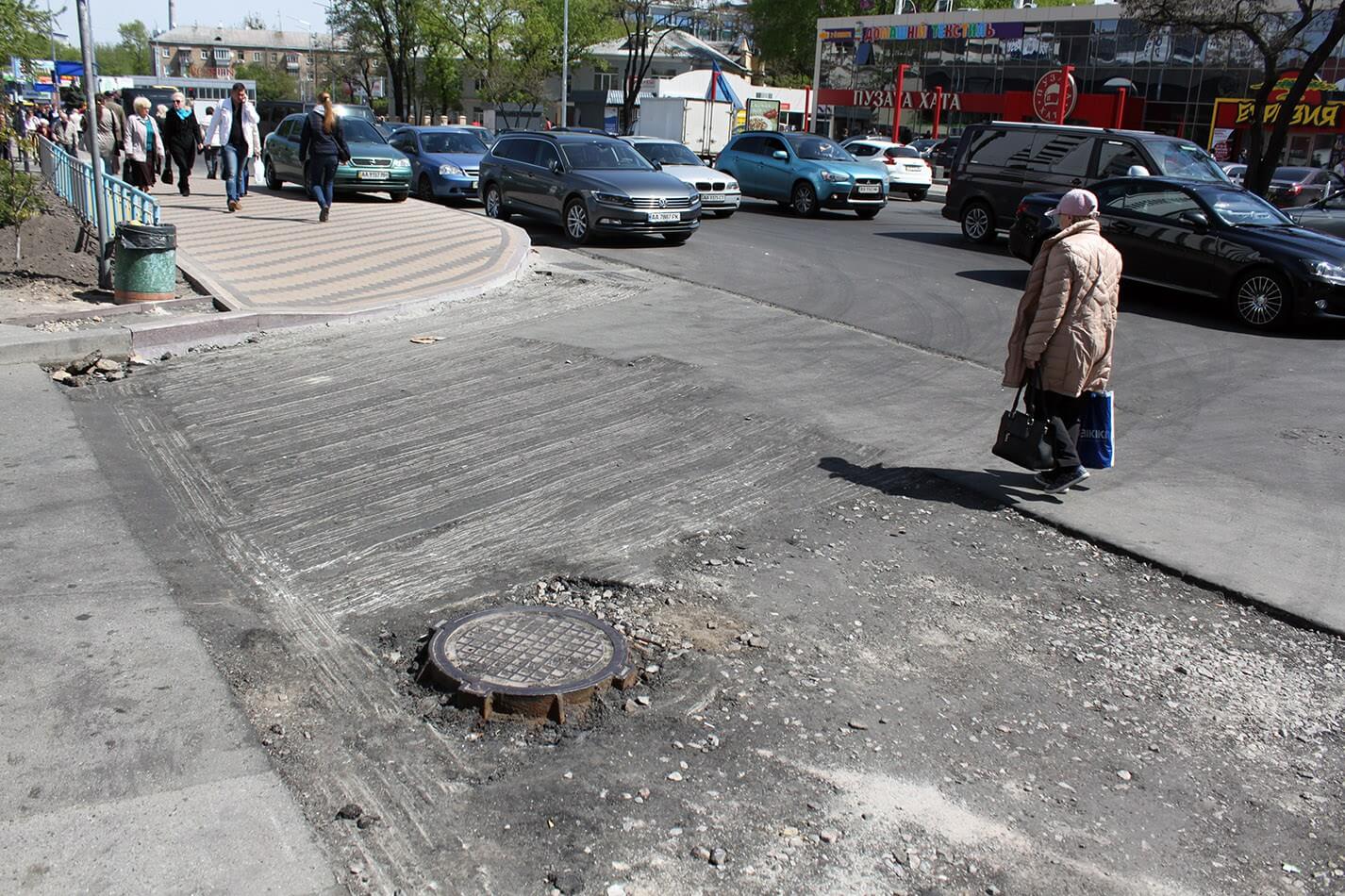
Nearly the entire route from the right bank of the Dnieper River to the International Exhibition Center, where Eurovision will be held, smells of fresh paint: Anything that did not look attractive enough has been painted over. This includes painting the fences on the Metro Bridge, as well as the graffiti that has been put on passages, pillars and slopes of the Metro overpass, which will be the main route of visitors to the competition. They have even painted over a concrete wall.
As if challenging the main slogan of the festival – “Celebrate Diversity”—the paint color of choice is gray.
As if challenging the main slogan of the festival – “Celebrate Diversity”—the paint color of choice is gray. Already gray concrete slabs and yellow-blue fences (colors of Ukraine’s national flag) have been repainted, covering up the works of patriotic artists that had been painted on them a few years ago. And the graffiti that grazed the metro train route? Glazed over by a thick layer of green paint. And precision weapons have been waged in the war against mural art in the underground passage of the Hydropark Metro Station, where smooth rectangles of fresh paint have almost completely concealed the tags of unknown writers from sight.
Manufacturers of pavement tiles are apparently making good money off Eurovision, as the Kyivan government has decided to pave all paths leading to the contest venue with tiles. Hundreds of people and dozens of units of machinery have been brought to the Livoberezhna Metro Station (the “Left Bank”) to accomplish this task. Even without the addition of workers and machinery, transportation congestion was already high here, but is now consumed by a construction frenzy. Swarms of passengers, asphalt compactors, excavators, vehicles, various other construction workers and even kebab chefs are all included in this mix.
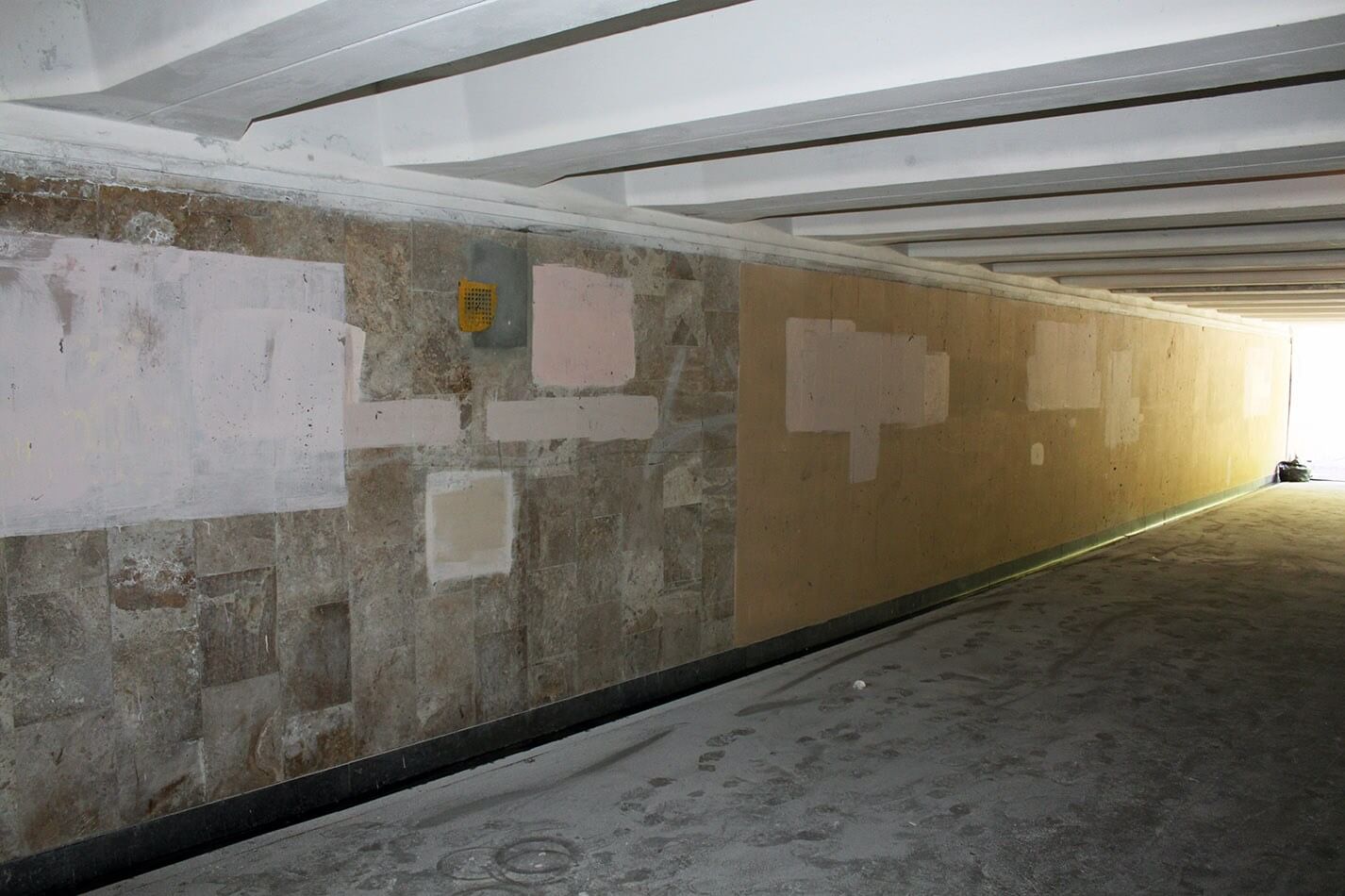
Pedestrians attempt to somehow cross to the other side of the street to access the only functioning entrance to the subway. They then jump into cars and continue on their way, going between machines puffing smoke and other pollutants into the air, treading new paths on the slope next to the stairs that are being dismantled in front of their very eyes. And where pedestrian zones will not have tiles, workers are demonstrating excellent skills with artistic asphalting, leaving intricate patterns embedded in the asphalt. Only the pavement on the busiest sections of streets is impeccable: the fresh asphalt smells and looks just as fresh and smooth as it does in Western Europe.
Reconstructed doorways are so narrow that a person with a wheelchair would be physically impeded from entering the station.
Specific attention must be placed on the sensational reconstruction of the Lievoberezhnaya Metro Station itself, which is still not finished. For one million dollars, the suspicious company that won the bid for the construction job has not managed to even properly redecorate the station. Pictures of construction failures have spread all over social media as soon as the first renovated station entrance was opened. Reconstructed doorways are so narrow that a person with a wheelchair would be physically impeded from entering the station. The day after renovation began, protests by handicapped peoples materialized, which resulted in the doors being replaced. However, the ramps that lead to the platform are still the same as before, which means only fans of extreme climbing would be happy to make use of them.
The original installation in the station hall was also replaced. It was initially meant to show a panoramic view of Kyiv from a specific point of view, but no one ever managed to decide on which point of view to exhibit; the degree of conceptuality was drastically decreased. Thus the installation was replaced with a mere photograph.
But there are even more serious issues. Even if it is possible to pave the streets, plant trees, and paint fences in a month’s time, still the unfinished buildings and abandoned construction sites cannot be covered up easily. Thus upon Eurovision visitors exiting the Boryspil Airport terminal, they will be welcomed by a bus terminal under construction. In the heart of Kyiv, on the Maidan Square, they will be able to examine the skeletal frames of the Labor Union House, while enjoying the view of the Dnieper River, as well as having the chance to admire the arcs of the “frozen” Podil Bridge Crossing.
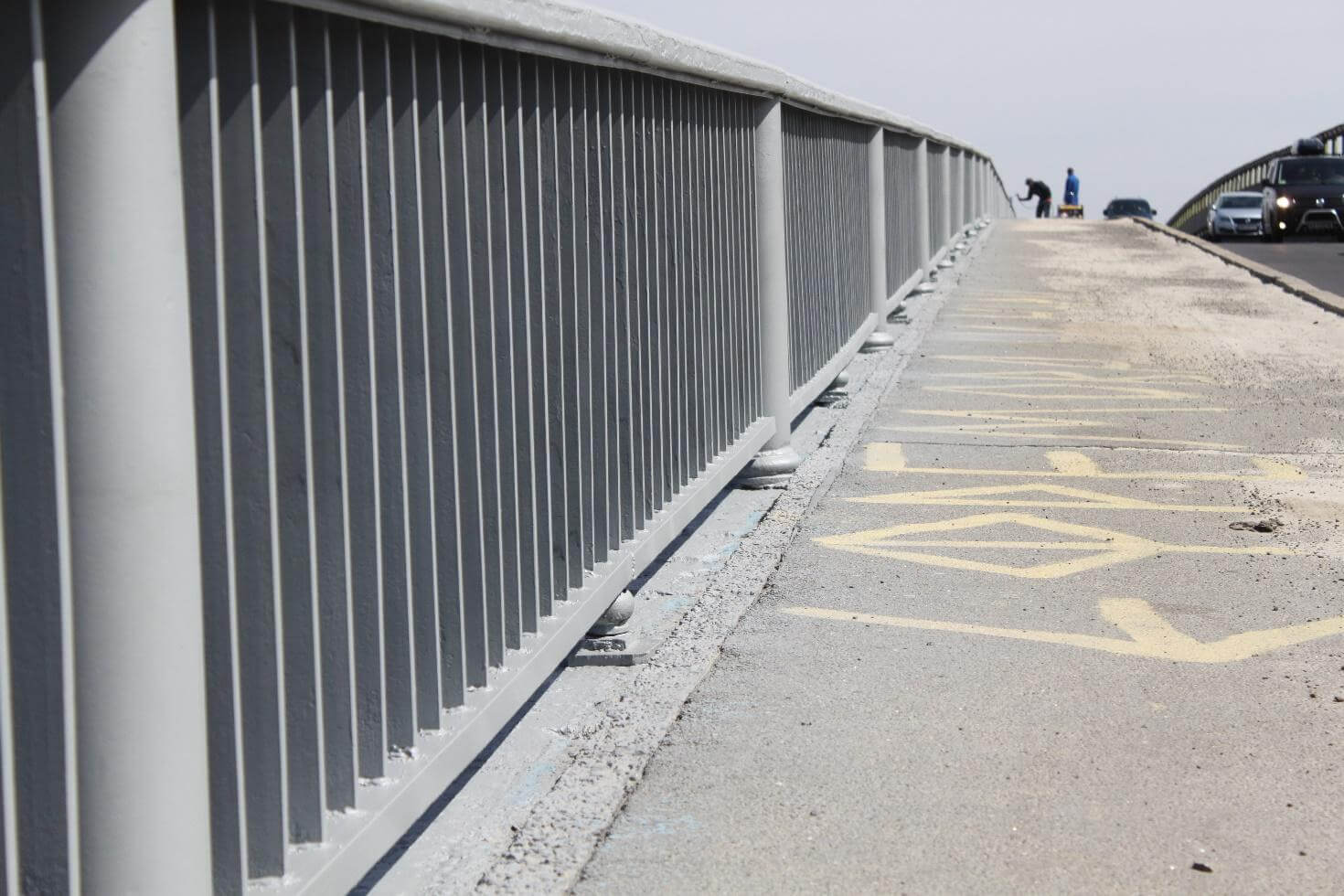
Many architectural attractions are located where the contest venue itself will be. Despite protests and violations of construction norms, the construction of the Sunny Riviere condominium still continues, and the massive Soviet State Planning Authority building – one of the last major unfinished construction sites of Kyiv – is located precisely on the route from the metro to the International Exhibition Center. Not long ago, this site was made inaccessible to urban explorers via threatening barbed wire, but now the latter has been hidden from Western European view, bending it behind the fence or simply cutting it off with a chainsaw. The abandoned construction site itself, after lengthy negotiations with Naftogaz, was covered with a banner. This installation probably deserves the title of best monument to Eurovision 2017, in respect to its spirit exhibiting a Potemkin vibe.
We see the call to “Celebrate Diversity” clashing with the (currently) popular idea that “diversity is alien to Ukrainians.”
This Potemkin spirit is not only visible in architecture, but also discursively, as we see the call to “Celebrate Diversity” clashing with the (currently) popular idea that “diversity is alien to Ukrainians.” This contradiction was comically embodied in the Friendship of Peoples Ark, which was intended to be turned into a rainbow for the contest period. Almost immediate to the beginning of the works, fighters against the “homodictatorship” raised their voices; they saw LGBTQ+ propaganda in the rainbow. Two days later, on April 27th, the works were suspended due to pressure coming from Right Sector activists, who rose up to “protect” the monument for the reunification of Ukraine and Russia.
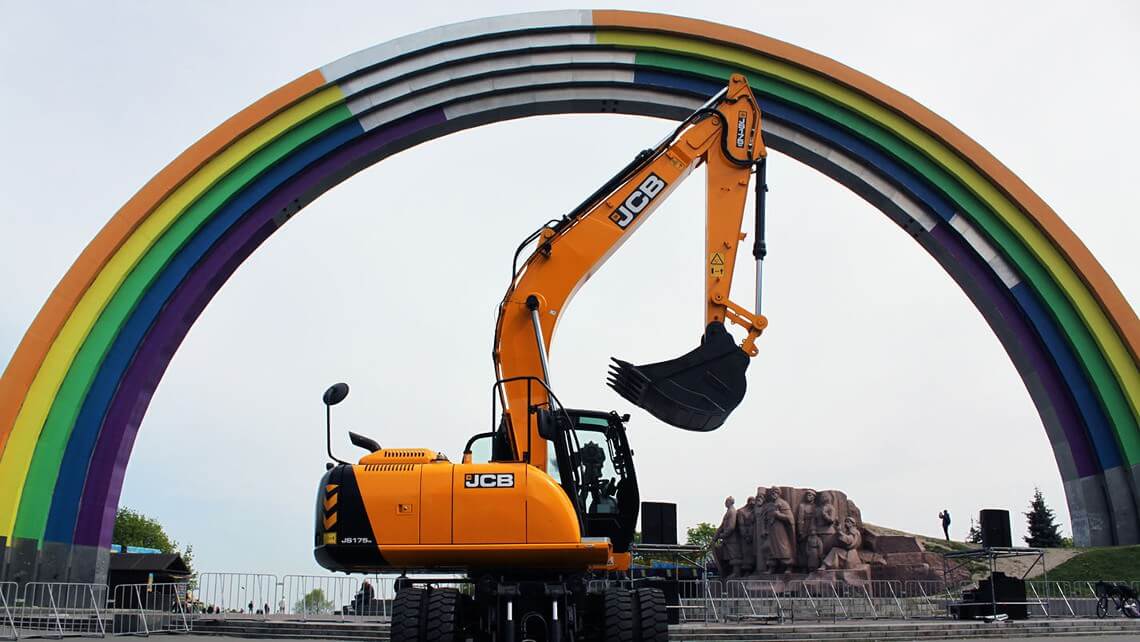
“We [the Right Sector, Svoboda, and other nationalist organizations] disagree with these so-called decorations, that are being made. It is covert LGBTQ+ propaganda, although the Friendship of Peoples Ark is, of course, an outdated monument. It may not be necessary, but still, it is included in the list of national monuments; changing it is simply illegal,” claimed the Right Sector’s spokesperson, Artem Skoropadsky. He also added that, “if the government wants to decorate the Ark for Eurovision so much, they should paint it with folk ornaments or something.”
This attitude towards LGBTQ+ issues is nothing new. Last year’s Kyiv Pride did not turn into a bloody battlefield only thanks to, once again, demonstrative efforts by the government, which mobilized more than 6,000 police officers to protect the demonstrators. However, there is another stigmatized group in Ukrainian society that has no one stand up for them, and for whom Eurovision 2017 is already functioning as a tragedy: the Roma community. On April 6th, in the Kyiv Berezniaky neighborhood, a group of unknown people set fire to a Roma camp where nearly 180 people lived. No one was injured, but only because most of the camp’s inhabitants were already evicted prior to the fire; the day before the arson, the camp was visited by “activists” who “persuaded” the Roma to leave their houses. As compensation, they were offered one-way tickets to Transcarpathia, where a large Roma community lives.
The eviction of the Roma was initiated by members of the local council and local activists who were motivated by xenophobic slogans, such as “Clean the city!” or “Protect your house, neighborhood, your city, your land.” Most residents of the neighborhood nearly approved, unanimously, to conduct such “cleansing.” What makes the situation even more poignant is the fact that the Hungarian performer in Eurovision 2017 is Roma, and his contest songs reflect his Roma culture.
Although the reconstruction of Kyiv for Eurovision is being carried out in the best traditions of Potemkin villages, it costs very real and tangible money. The budget for the competition varied widely in the last couple of years, from a fabulous 64 million spent by Azerbaijan, to the modest 26 million by the Swedes – which even allowed the city to profit off it. Eurovision 2017 will be rather modest by European standards: the state budget allocated about $17.2 million for the contest, but the city budget only provided about $7.5 million, which totals approximately $25 million. Yet prices in Ukraine are, on average, much lower than in Western Europe, and a few particular expenses are raising concerns.
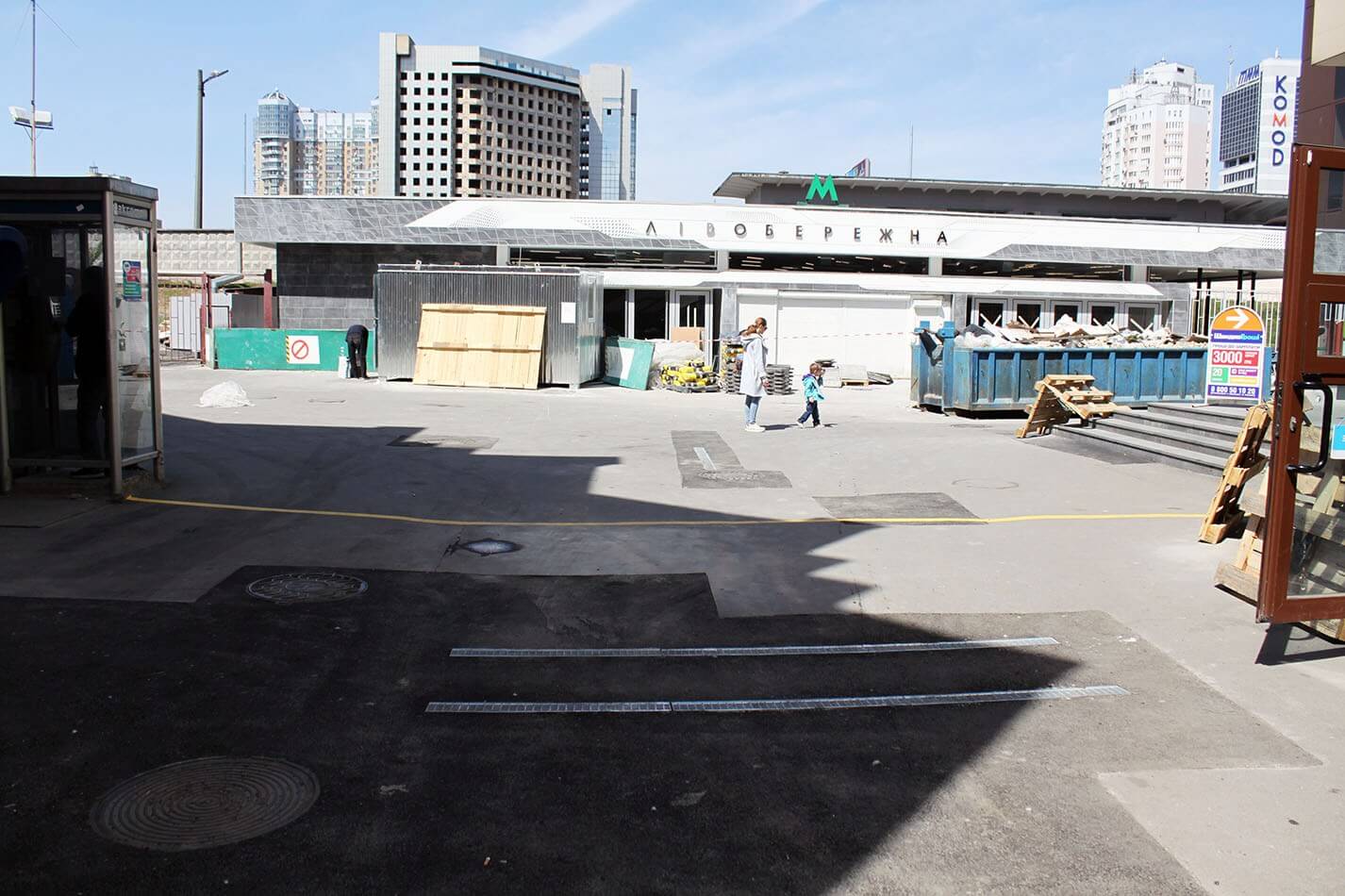
We’ve already mentioned the 1 million spent on redecoration of the LIboberezhna Metro Station, but there are yet other scandals of concern. This relates to the price of the festival’s logo design, which has cost $17,000. The stage design has cost $300,000, and stage construction another $1 million. Camera surveillance has cost about $680,000, and rent for the contest venue is $1.32 million. These are considerable amounts for Ukraine’s budget, and so we should regard them suspiciously, despite it being too early to determine if corruption is implicit in these sums. It’s not anything new for the government to reach into the pockets of future generations to create a glamorous spectacle. Take the 2017 budget, for example, which still includes payments for the loans taken to organize the Euro 2012 soccer championship. Meanwhile, most facilities constructed for EuroCup were either completely abandoned after the championship – like the Arena Lviv stadium – or are extremely underused.
But why grumble? Why go into such unpleasant detail? What is the point? Instead, come and let’s celebrate the Potemkin diversity. “Welcome to Kyiv, the capital of sincere and talented Ukraine!”
***
This article was prepared using materials of the Poverty, War, Eurovision page.
Translated from Russian by Roksolana Mashkova and Rebekah Switala
![Political Critique [DISCONTINUED]](https://politicalcritique.org/wp-content/uploads/2015/09/Political-Critique-LOGO.png)
![Political Critique [DISCONTINUED]](https://politicalcritique.org/wp-content/uploads/2015/09/Political-Critique-LOGO-2.png)
Translated from Russian … say no more!